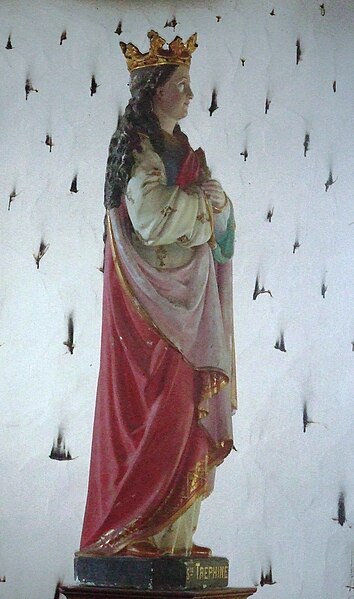Saint Tryphine is a semi-legendary Breton saint whose life is often considered to be the basis of the story of Bluebeard. In Brittany she is widely revered as a patron saint of sick children and those whose birth is overdue. The legend of Saint Tryphine probably derives from a historical individual who was the wife of the early Breton ruler Conomor.
Statue of St Tryphine in Côtes-d'Armor, Brittany (c. 1850)
"Bluebeard" is a French folktale, the most famous surviving version of which was written by Charles Perrault and first published by Barbin in Paris in 1697 in Histoires ou contes du temps passé. The tale tells the story of a wealthy man in the habit of murdering his wives and the attempts of the present one to avoid the fate of her predecessors. "The White Dove", "The Robber Bridegroom", and "Fitcher's Bird" are tales similar to "Bluebeard". The notoriety of the tale is such that Merriam-Webster gives the word Bluebeard the definition of "a man who marries and kills one wife after another". The verb bluebearding has even appeared as a way to describe the crime of either killing a series of women, or seducing and abandoning a series of women.
Bluebeard, his wife, and the key in a 1921 illustration by W. Heath Robinson
The Wife is given the keys of the house. Illustration by Walter Crane
Bluebeard is slain in a woodcut by Walter Crane
Edmund Dulac illustration, 1910





